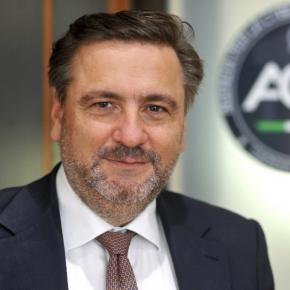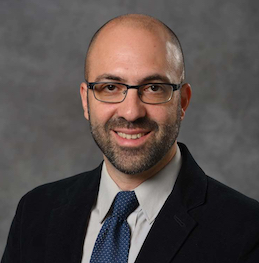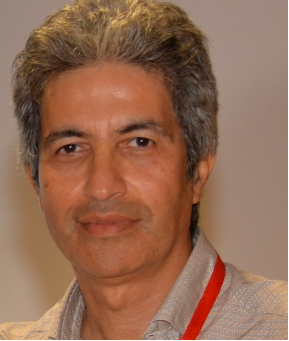Program/Keynotes
Wednesday Keynote 1
Navigating the Digital Sovereignty Landscape: Challenges and Strategies
Over the past twenty years, cyberspace has evolved from a global economic space - controlled primarily by multinational technology giants in social, cloud, microchip, and cybersecurity - to a strategic geopolitical space. It is therefore not surprising that governments are increasingly bringing the term "digital sovereignty" into play. However, digital space, by its very nature, is a global entity shared by all nations, and the globalized nature of the software and hardware supply chains adds further complexity to the notion of digital sovereignty. Despite its intricacies, understanding digital sovereignty is critical to effectively addressing international regulatory issues such as jurisdiction over data and taxation of profits from data exploitation activities. This presentation introduces the multifaceted concept of digital sovereignty, delves into the prominent risks it confronts, and emphasizes the need for comprehensive nationwide strategies to mitigate these risks. It highlights the dynamic nature of digital sovereignty, shaped by evolving technology, national policies, and geopolitics, emphasizing that no nation will ever reach full sovereignty in the digital space. This prompts a discussion on the prerequisites a nation must fulfill to achieve a substantial level of digital sovereignty and the ongoing efforts required to enhance this level over time. Furthermore, the talk underscores the pivotal role of computer scientists in this ever-evolving landscape, identifying emerging technical threats where research results can help a nation to strengthen its digital sovereignty.
Short Biography
In August 2021, Roberto Baldoni was appointed by Prime Minister Draghi as first General Director of the National Cybersecurity Agency (ACN). He resigned in March 2023 during Prime Minister Meloni's administration. From December 2017 to August 2021, he served as Deputy Director General of the Information Department for Security. In these capacities, he had the responsibility of developing the National Cybersecurity Architecture and orchestrating coordinated responses to cyberattacks with implications for national security. Among his notable achievements during this period, Baldoni led the working group responsible for designing and drafting the "National Security Perimeter for Cyber" Law (approved in November 2019), including five descending executive decrees to enforce its provisions. He also led the working group that drafted legislation restructuring Italy's Cybersecurity Architecture and establishing the ACN (DL n.82/2021). Baldoni headed the work for the setup of the ACN, of the Italian Computer Security Incident Response Team (CSIRT) and of the National Center for Certification and Evaluation. Additionally, he led an interministerial working group responsible for shaping the National Cloud Strategy and the National Cybersecurity Strategy, which also encompassed an implementation plan. The latter was subsequently enacted as an executive decree by the Prime Minister in May 2022. Before this, Roberto Baldoni held a Full Professor position of Computer Science at La Sapienza University of Rome from 2002. During this time, he founded in 2010 and directed Italy's first research center focused on "Cyber Intelligence and Information Security".

Roberto Baldoni, Sapienza University of Rome, Italy
Wednesday Keynote 2
Fault-tolerant Distributed Runtime Monitoring
Monitoring distributed applications that do not share a global clock is highly challenging as the monitor has to potentially deal with a combinatorial enumeration at run time. We also have every reason to believe that distributed monitors are not necessarily perfect and monitors are subject to all types of faults that normal distributed processes are. In this talk, I will present our results on runtime verification of distributed systems. We make a practical assumption that the distributed system under scrutiny is augmented with a clock synchronization algorithm that guarantees bounded clock skew among all processes. Second, we do not make any assumption about the structure of the formal specification under inspection. We introduce a set of distributed monitoring algorithms by employing SMT-solving that range over discrete distributed systems such as databases to cyber-physical systems such as network of autonomous vehicles. I will also present real-world case studies and demonstrate that scalable online monitoring of distributed applications is within our reach.
Short Biography
Borzoo Bonakdarpour is currently an Associate Professor of Computer Science at Michigan State University. His research interests include formal methods and its application in distributed systems, computer security, and cyber-physical systems. He has published more than 120 articles and papers in top journals and conferences. His work in these areas have received multiple best paper awards from highly prestigious conferences, including, RV’21, SRDS'17, SSS'14, and SIES'10. He chaired the Technical Program Committee of the SRDS'20, SSS’16, and RV’14 conferences.

Borzoo Bonakdarpour, Michigan State University, USA
Thursday Keynote
The Quest for Lost Universality
This talk will walk you through a brief journey on the History of Distributed Computing, discussing old notions like "universality" as well as modern notions like "cryptocurrencies" and "safe machine learning".
Short Biography
Rachid Guerraoui has worked in the past with École des Mines de Paris, CEA Saclay, HP Labs in Palo Alto and MIT. He has been elected ACM Fellow and Professor of the College de France. He was awarded a Senior ERC Grant and a Google Focused Award.

Rachid Guerraoui, EPFL, Lausanne, Switzerland
Friday Keynote
The power of connections: Graph Neural Networks
I will begin my talk by motivating the use of machine learning on graph structured data. Then, I will describe some of the theoretical underpinnings of graph neural networks (GNN). Instantiations of the message-passing GNN (MP-GNN) model, namely convolutional and attentional GNNs, will be presented. The link between GNNs and Weisfeiler-Lehman isomorphism test will be discussed, along with GNN models that extend beyond message passing. Semi-supervised and self-supervised methods for training GNN will be discussed. Lastly, I will discuss node classification using GNN models and a graph-assisted Bayesian method, and compare these approaches using benchmark graphs.
Short Biography
Mounir Ghogho received his PhD degree in 1997 from the National Polytechnic Institute of Toulouse, France. He was an EPSRC Research Fellow with the University of Strathclyde, from Sept 1997 to Nov 2001. In Dec 2001, he joined the University of Leeds, where he was promoted to full Professor in 2008. While still affiliated with the University of Leeds, in 2010 he joined the International University of Rabat where he is currently Dean of the College of Doctoral Studies and Director of TICLab. He is a Fellow of IEEE and AAIA (Asia- Pacific AI Association), a recipient of the 2013 IBM Faculty Award, and a recipient of the 2000 UK Royal Academy of Engineering Research Fellowship. He is the co-founder and co-director of the CNRS-associated International Research lab DataNet. His research interests are in Machine Learning, Signal Processing and Wireless Communication. He has coordinated around 20 research projects and supervised over 50 PhD students in the UK and Morocco. He served as Associate Editor of many journals including the IEEE Signal Processing Magazine and the IEEE Transactions on Signal Processing.

Mounir Ghogho, International University of Rabat, Morocco